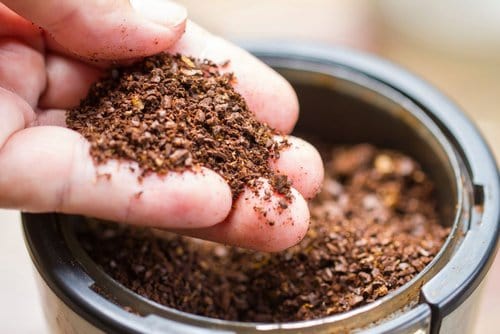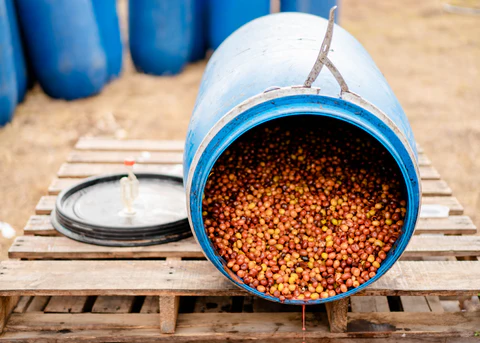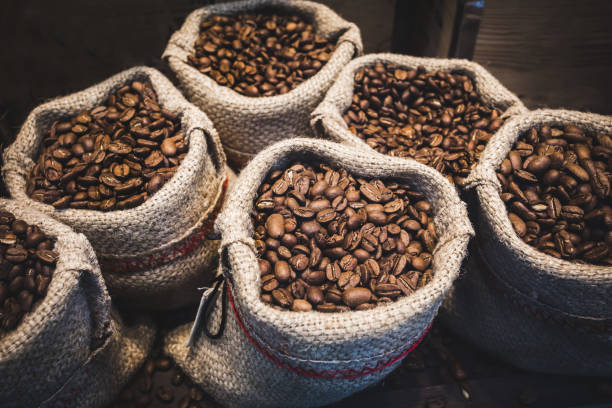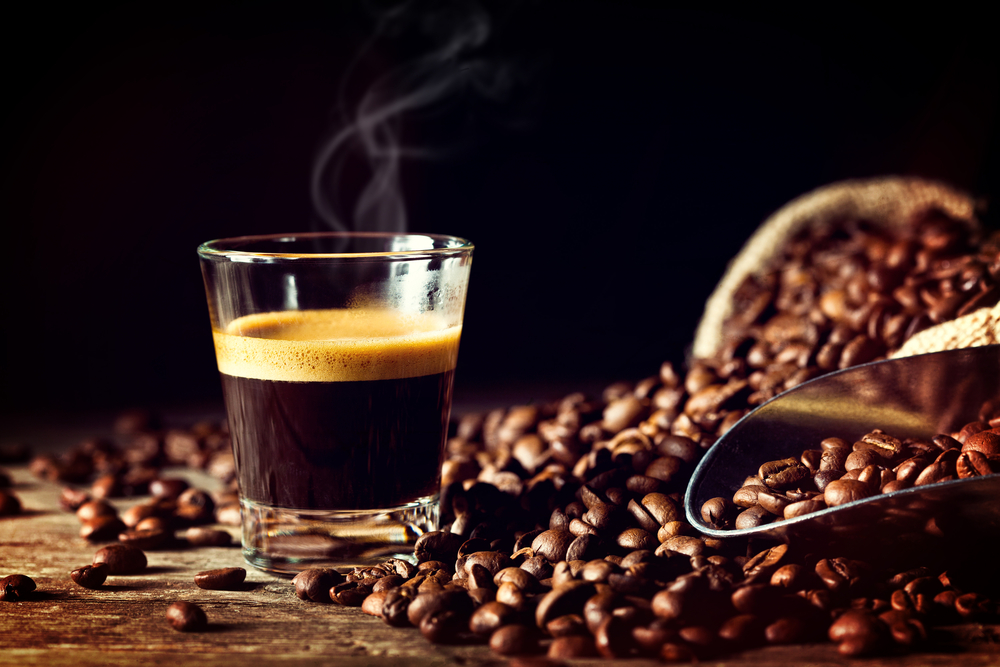Espresso enthusiasts, gather around! If you’re passionate about your coffee, you’ve probably noticed that not all espressos are created equal. One day your shot is perfection in a cup, and the next day it’s… well, less than stellar. What’s the secret ingredient that can make such a difference? It’s all in the grind size.
Understanding the importance of grind size in making various espresso drinks is essential for any coffee lover. The grind size directly influences the flavor, strength, and overall quality of your espresso-based beverages. In this article, we’re diving into the nitty-gritty of how grind size affects espresso drinks and how adjusting the it can transform your espresso game.

Why Grind Size Matters
The grind size determines the surface area of the coffee that comes into contact with water during the brewing process. This surface area affects how quickly the water extracts flavors from the coffee grounds.
Too Fine:
If the grind is too fine, the water struggles to pass through, leading to over-extraction. This can result in a bitter and overly strong espresso that can leave an unpleasant aftertaste.
Too Coarse:
On the flip side, if the grind is too coarse, the water flows through too quickly, causing under-extraction. This produces a weak and watery shot that lacks the robust flavors you expect from a good espresso.


Finding the perfect grind size is all about balance. You want just the right amount of resistance to allow the water to extract the rich, complex flavors without going overboard. This balance is the sweet spot that brings out the best in your espresso drinks, whether it’s a classic espresso shot, a creamy cappuccino, or a frothy latte.
Grind Size for Ristretto
When it comes to a ristretto, which is essentially a “short shot” of espresso, the grind size plays a critical role. For this intensely flavorful drink, a finer grind is your best friend. The ideal grind size for a ristretto is typically finer than what you’d use for a standard espresso, almost to the point where it feels like powder between your fingers.

Concentrated and Intense Flavor Profile
A ristretto is all about concentration. By using a finer grind, you reduce the flow rate of water through the coffee grounds. This slower flow results in a shorter extraction time, allowing only the most intense and rich flavors to be pulled from the coffee. The outcome is a small, potent shot that’s packed with bold, concentrated flavors, with less bitterness compared to a longer extraction.

Achieving the Perfect Extraction Time
Getting the perfect extraction time for a ristretto requires some trial and error, but here are a few tips to help you get there:
- Grind Finer: Start by setting your grinder to a finer setting than you would for a regular espresso shot.
- Tamp Consistently: Ensure that you’re tamping your coffee grounds evenly and with consistent pressure to avoid channeling, which can lead to uneven extraction.
- Adjust Extraction Time: Aim for an extraction time of about 15-20 seconds. This is shorter than a standard espresso shot, which usually takes about 25-30 seconds.
- Monitor Yield: A ristretto typically yields about 15-20ml of liquid. If you’re getting more than this, your grind might be too coarse or your tamping pressure too light.

Maintaining Consistency
Consistency is key in making the perfect ristretto. Here are a few additional tips to help you maintain it:
- Regularly Clean Your Grinder: Coffee oils and particles can build up in your grinder, affecting the consistency of your grind size. Regular cleaning ensures that your grinder performs optimally.
- Use Fresh Beans: Coffee beans start to lose their flavor soon after being ground. Using freshly ground beans helps maintain a consistent and rich flavor profile.
- Practice Makes Perfect: Don’t be afraid to experiment with different grind sizes and extraction times. The more you practice, the better you’ll understand the nuances of your specific equipment and beans.
By mastering the grind size and extraction process, you can enjoy a ristretto that’s rich, concentrated, and bursting with flavor every time.
Grind Size for Lungo
A lungo, which translates to “long” in Italian, is an espresso variation that uses more water and a longer extraction time. To achieve this, you’ll need a slightly coarser grind compared to a standard espresso. The coarser grind allows the water to flow more freely through the coffee grounds, facilitating a longer extraction time without over-extracting and producing bitter flavors.

Longer Extraction for a Milder Flavor
The key characteristic of a lungo is its volume and milder flavor profile. By using a coarser grind, the water takes longer to pass through the coffee grounds. This extended contact time extracts more of the coffee’s subtle flavors and aromatic compounds, resulting in a larger, milder cup with a nuanced taste profile. While a standard espresso shot typically takes 25-30 seconds to extract, a lungo might take 45-60 seconds, yielding a drink that’s about twice the volume of a standard espresso.
Adjusting the Grind and Extraction Process
Here’s how to fine-tune your grind size and extraction process to brew the perfect lungo:

- Set Your Grinder Coarser: Begin by adjusting your grinder to a coarser setting than what you use for a standard espresso. The grind should still be fine enough to provide some resistance, but not as fine as an espresso or ristretto grind.
- Tamp Evenly: As with any espresso-based drink, ensure you’re tamping the grounds evenly and with consistent pressure to avoid channeling.
- Monitor Extraction Time: Aim for an extraction time of around 45-60 seconds. This longer extraction period is essential for developing the lungo’s distinctive flavor profile.
- Check the Yield: A lungo typically yields about 60-90ml of coffee. If your extraction time is correct but the yield is off, you may need to adjust your grind size or tamping technique.
- Taste and Adjust: The taste is the ultimate guide. If your lungo is too bitter, try a slightly coarser grind. If it’s too weak, tighten the grind a bit. Remember, the goal is a balanced flavor that’s more voluminous and less intense than a standard espresso.
Fine-Tuning for Consistency
Achieving a consistent lungo requires practice and attention to detail. Here are a few additional tips to help you perfect your brew:
- Regularly Calibrate Your Grinder: The coarser grind settings can drift over time, so it’s important to regularly check and calibrate your grinder.
- Use High-Quality Water: The longer extraction time means that the water quality has a greater impact on the final flavor. Using filtered water can help ensure a cleaner taste.
- Experiment with Ratios: While the standard ratio for a lungo is around 1:3 (one part coffee to three parts water), feel free to adjust this to suit your taste preferences.

Grind Size for Macchiato
A macchiato, which means “stained” or “spotted” in Italian, is an espresso-based drink that features a small amount of milk foam added to a shot of espresso. The key to a perfect macchiato lies in the balance between the strong espresso base and the light, creamy milk foam. To achieve this, the grind size is crucial.
For a macchiato, the optimal grind size is similar to that of a standard espresso—fine, but not too fine. The aim is to produce a robust and intense espresso shot that can stand up to the small amount of milk foam without being overwhelmed.

How Grind Size Affects Balance
The grind size directly impacts the extraction process, which in turn affects the flavor and intensity of the espresso. Here’s how:
- Fine Grind: Using a fine grind ensures that the espresso has a strong, concentrated flavor. This is essential for a macchiato, as the small amount of milk foam should complement, not dilute, the espresso.
- Extraction Time: With a fine grind, the extraction time should be around 25-30 seconds. This duration allows for a full-bodied espresso shot that maintains its bold character even with the addition of milk foam.

Achieving the Right Flavor Intensity and Texture
To perfect your macchiato, here are some tips on dialing in the grind size and extraction process:
- Fine-Tune Your Grind: Start with a fine grind setting on your grinder, similar to what you would use for a standard espresso. The grind should feel like table salt between your fingers.
- Consistent Tamping: Apply even pressure when tamping the coffee grounds to ensure uniform extraction. Inconsistent tamping can lead to channeling, which affects the flavor and intensity of the espresso.
- Monitor the Extraction: Aim for an extraction time of 25-30 seconds. If the shot pulls too quickly, the grind might be too coarse. If it takes too long, it might be too fine.
- Foam the Milk: Prepare a small amount of milk foam using a steam wand or milk frother. The foam should be light and airy, adding a slight creaminess without overshadowing the espresso’s intensity.
- Combine with Care: Pour the espresso into a cup and gently add the milk foam on top. The espresso should remain the dominant flavor, with the foam adding a subtle sweetness and texture.

Tips for Consistency
Here are some additional tips to ensure your macchiato is consistently delicious:
- Use Fresh Beans: Freshly roasted and ground beans produce the best flavor. Stale beans can result in a lackluster espresso.
- Regular Grinder Maintenance: Clean your grinder regularly to avoid residue buildup, which can affect the consistency of your grind size.
- Experiment with Ratios: While a traditional macchiato uses a small amount of milk foam, feel free to adjust the ratio to your taste preferences. Just remember, the espresso should always be the star of the show.
By paying close attention to the grind size and extraction process, you can create a macchiato that perfectly balances the boldness of espresso with the delicate touch of milk foam, providing a delightful and satisfying coffee experience.
Disclosure: Our blog contains affiliate links to products. We may receive a commission for purchases made through these links. However, this does not impact our reviews and comparisons. We try our best to keep things fair and balanced, in order to help you make the best choice for you.





